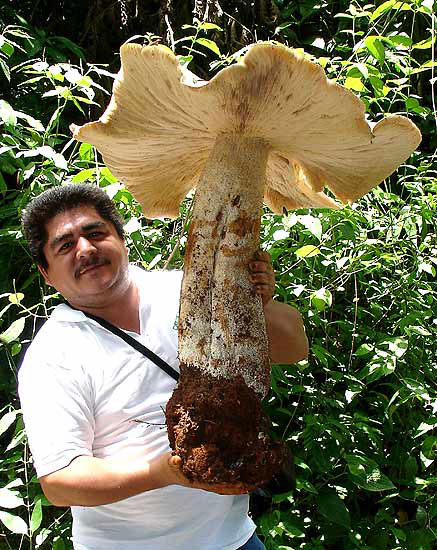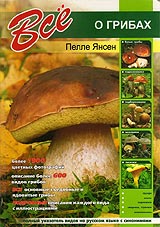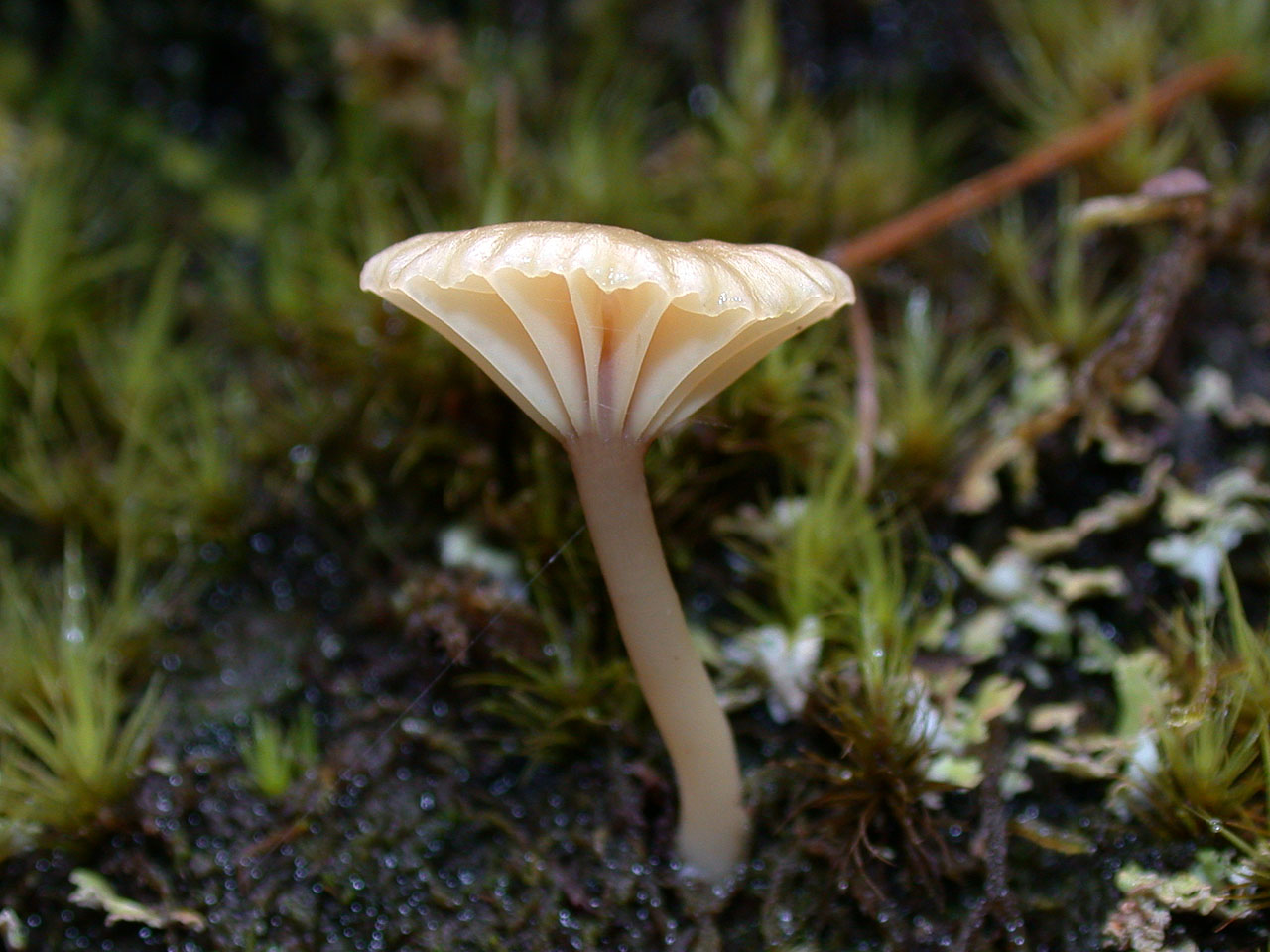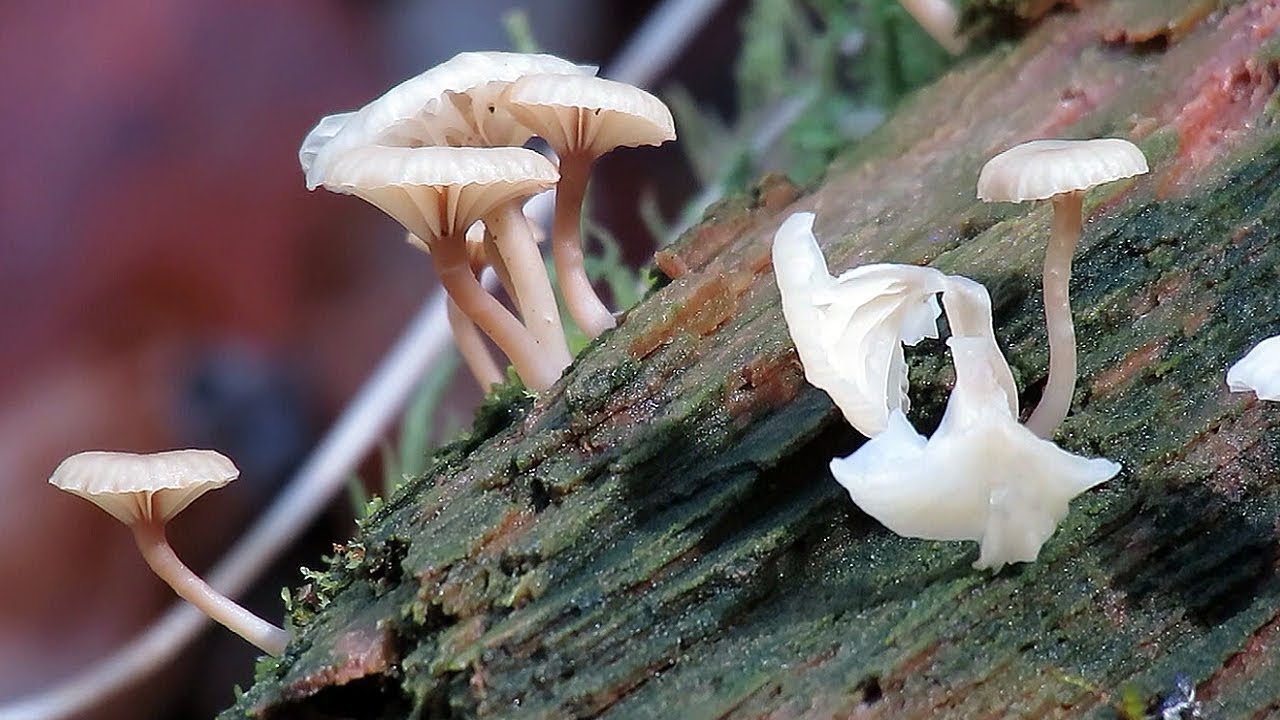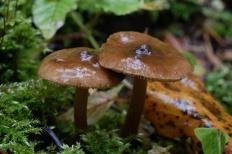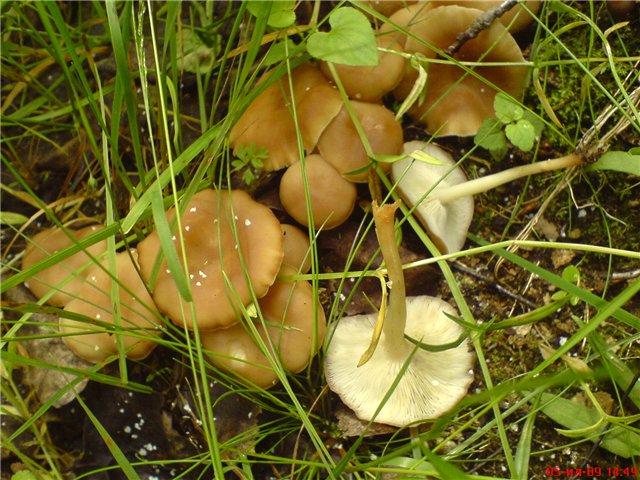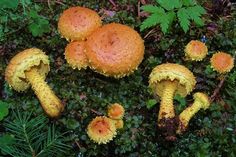Xeromphalina stem-shaped (Xeromphalina cauticinalis)
Synonyms:
- Agaricus caulicinalis
- Marasmius cauticinalis
- Chamaeceras caulicinalis
- Marasmius fulvobulbillosus
- Xeromphalina fellea
- Xeromphalina cauticinalis var. acida
- Xeromphalina cauticinalis var. subfellea
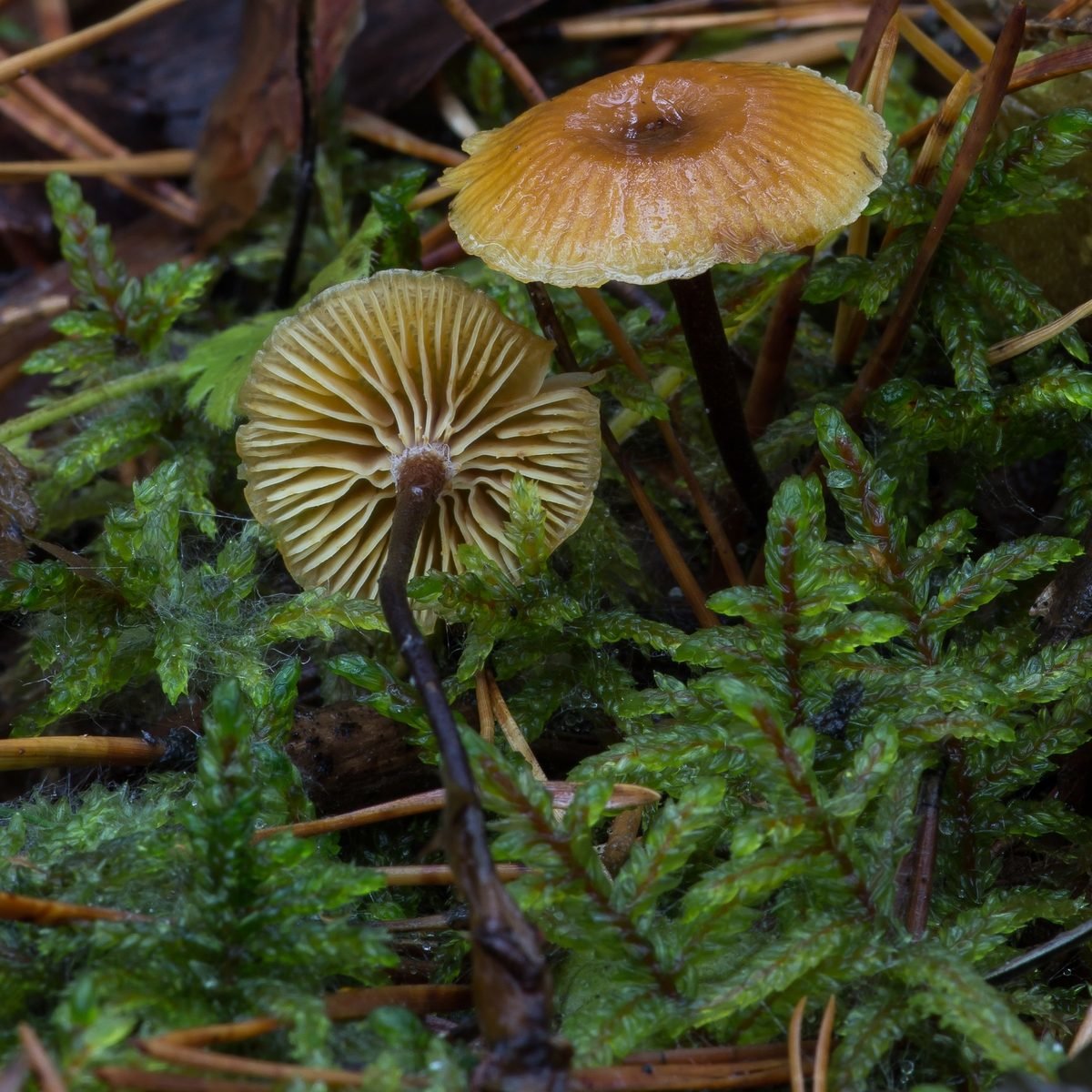
The accepted name is Xeromphalina cauticinalis, but sometimes you can find the spelling Xeromphalina caulicinalis (via "L" in the word cauticinalis). This is due to an old misprint, not species differences, we are talking about the same species.
Description
Hat: 7-17 mm in diameter, some sources indicate up to 20 or even 25 mm. Convex, with a slightly tucked edge, as it grows, it straightens to widely convex or flat, with a shallow central depression. With age, it takes the form of a wide funnel. The edge is uneven, wavy, looks ribbed due to translucent plates. The skin of the cap is smooth, bald, sticky in wet weather, dries up in dry weather. The color of the cap ranges from orange-brown to reddish-brown or yellow-brown, often with a darker, brown, brownish-reddish center and a lighter, yellowish edge.
Plates: widely accrete or weakly descending. Rare, with lamellae and fairly well visible anastomoses ("bridges", accrete areas). Pale creamy, pale yellow, then cream, yellow, yellowish ocher.
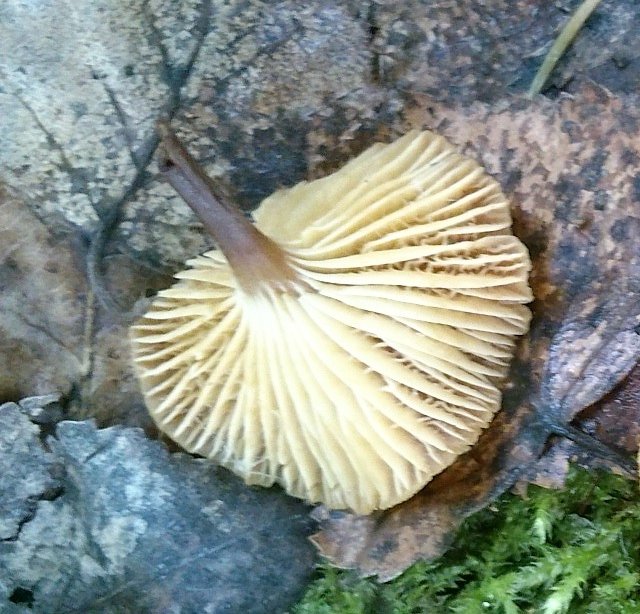
Leg: very thin, only 1-2 millimeters thick, and quite long, 3-6 centimeters, sometimes up to 8 cm. Smooth, with a slight extension at the cap. Hollow. Yellowish, yellow-red above, at the plates, below with a color transition from reddish brown to dark brown, brown, black-brown. The upper part of the peduncle is almost smooth, with a slight reddish pubescence, which becomes more pronounced from top to bottom. The base of the stem is also widened, and significantly, up to 4-5 mm, tuberous, with a red felt covering.
Flesh: soft, thin, yellowish in the cap, dense, tough, brownish in the stem.
Smell and taste: not pronounced, sometimes the smell of dampness and wood is indicated, the taste is bitter.
Chemical reactions: KOH bright red on the surface of the cap. Imprint of spore powder: white. Spores: 5-8 x 3-4 microns; ellipsoidal; smooth; smooth; weakly amyloid.
Ecology
In coniferous and mixed forests (with pine), on coniferous litter and decaying wood immersed in the soil, needle litter, often among mosses.
Season and distribution
It grows from late summer to late autumn - from August to November, in the absence of frost, and until December. The peak of fruiting usually occurs in the first half of October. It grows in rather large groups, often annually.
Xeromphaline stalk is widespread throughout the world, the mushroom is well known in North America (mainly in the western part), Europe and Asia - Belarus, Russia, Ukraine.
Notes: Xeromphalina cauticinalis var. acida is almost identical, but tastes bitter, even at a young age.
Photo: Alexander, Andrey.
Reclassified and excluded former Omphalinas
Lichenized omphalinas, which are basidiolichens, are now placed in Lichenomphalia... An example is the species previously known as either Omphalina ericetorum or Omphalina umbellifera that is now called Lichenomphalia umbellifera; etc.
Bryophilous gray to blackish former omphalinas are largely in the genus Arrhenia... Examples are: Omphalina epichysium, now Arrhenia epichysium; Omphalina sphagnicola now Arrhenia sphagnicola; etc.
Any former omphalina with amyloid spores goes into another genus. These genera include Mycena, Myxomphalia, Pseudoarmillariella, Xeromphalina, etc.
No true Omphalina has gelatinized or slimy tissues or brightly colored pigments. Neither do they have cystidia. Excluded species whose exclusion is supported by molecular analysis, include the genera: Blasiphalia, Chrysomphalina, Chromosera, Contumyces, Gerronema, Haasiella, Loreleia, Rickenella, etc.

